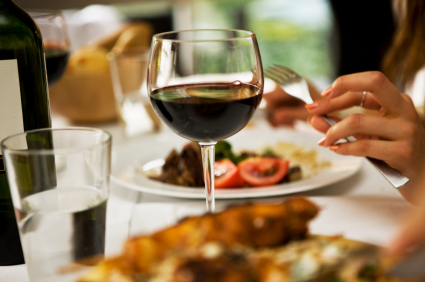Skip to content
Ten tips to matching wine with food
- The most food friendly wines are those with moderate acidity. This is because they can cut through the richness of a rich dish, whilst also balancing out the flavour of acidic dishes (think salad dressings, fresh tomato sauce etc). Wines with both acidity and residual sugar (for example, Riesling, Gewürztraminer, and off dry rose) are also food friendly wines, and can match with a variety of meats, seafood, poultry, cheeses, vegetables and fruits.
- When food-pairing your red wines, remember, light bodied reds go best with most foods such as meat, poultry, fish and vegetables. Pinot noir, Grenache, and Gamay are a sure thing!
- If you have some high tannic, high alcohol red wines red wines such as Shiraz, Zinfandel, or Cabernet Sauvignon, it’s best to partner them with dishes that have a little protein and fat, such as roasts and barbequed meat and steaks. This is because the fat in these dishes coats the mouth, and the astringency of the tannins cut through the viscosity of the fat, making the mouth-feel a smoother, softer and more flavourful experience.
- Remember, the body of the wine should match the body of the dish. If you have a light bodied wine, such as Moscato, Pinot Grigio, or Riesling, match it with lighter foods such as poultry, lighter fish, and poached or steamed dishes.
- When matching wines with your dessert, always be sure that the dessert wine is sweeter than the dessert itself, otherwise the wine will seem flabby (that’s wine-speak for flat and lifeless).
- Would you believe it, sparkling wine and champagnes go well with rich dishes and fried foods. It’s because bubbles are cleansing- the texture and acidity of the wines scrub your palate clean, making it nice and fresh for the next bite!
- High tannin and alcohol levels in a wine make spicy food seem spicier. Instead of pairing a red wine with your Thai / spicy meals, reach instead for a white wine with moderate alcohol and a little residual sugar that will tame the heat on your tongue. Rieslings and Gewürztraminers are best suited for these types of dishes. Their off-dry sweetness and high acidity offsets the spiciness of the dish and harmonises the flavours.
- When matching food with wine, choose a wine with characteristics you want in your dish. For example, if your dish would taste better with a little lemon on it, chances are a wine with some citrus characters will pair well, such as a cool climate unwooded Chardonnay or Sauvignon Blanc.
- Pairing wine with cheese can be harder than you think- generally, the leaner and fresher the cheese is, a leaner, lighter bodied wine is required. Aged cheeses on the other hand, need a more robust wine. Goat cheese is particularly high in acidity, so needs an acidic wine. The safest pairing for a varied cheese course is a wine with a little sweetness, like Gewürztraminer, off-dry Sherry, or Moscato.
- When matching wines to salty, savoury or rich foods, wines with residual sugar (that is, sugars added during the wine-making process, usually during or after fermentation), can be very companionable. Saltiness makes wines taste more sweet, hides their tannins and increases bitterness, so to compliment salty meals, sweet dessert wines are a go-to!
Scroll to Top

